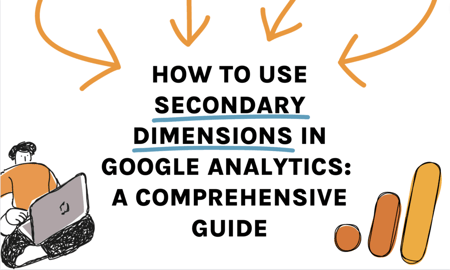Optimize Your Reporting Accuracy With Additional Dimensions
Additional dimensions supply a gateway to enhancing reporting accuracy by supplying a multifaceted lens through which to check out information. As we get started on this trip of leveraging secondary measurements, the landscape of reporting accuracy bids with pledges of enhanced quality and critical decision-making.
Value of Additional Dimensions
Utilizing second dimensions is essential for boosting the deepness and granularity of reporting insights in information evaluation. Additional dimensions enable experts to section and filter data based on details requirements, offering an extra personalized and targeted analysis.
Furthermore, additional dimensions assist in identifying correlations and partnerships that may not be right away apparent when examining information with only primary dimensions. This much deeper level of understanding can cause even more informed decision-making and tactical planning within an organization. By leveraging second measurements effectively, companies can reveal surprise opportunities, identify areas for renovation, and maximize their total performance.
Carrying Out Secondary Dimensions
To integrate additional measurements successfully right into information evaluation procedures, organizations have to adopt an organized strategy that straightens with their reporting purposes and logical objectives. Applying secondary dimensions involves selecting the best dimensions that give deeper insights into main information metrics. It is critical to identify which additional measurements will enhance the understanding of the primary data being evaluated. Companies should take into consideration variables such as the sort of data being collected, the certain metrics they want to evaluate, and the crucial efficiency indicators (KPIs) they are concentrated on enhancing.
In addition, organizations need to guarantee that the chosen secondary measurements pertain to the main data and give significant context without causing details overload. Executing secondary measurements additionally requires defining clear logical questions that the additional dimensions will certainly assist respond to. By structuring the implementation procedure around these considerations, businesses can make best use of the worth derived from second dimensions and enhance the precision and depth of their coverage.
Analyzing Information With Additional Dimensions

One secret aspect of assessing data with second dimensions is to guarantee that the picked dimensions straighten with your details analytical objectives. Choosing the right secondary measurements can offer context and subtlety to your main data metrics, enabling you to draw even click for source more accurate conclusions and make educated choices based on the understandings got.
Additionally, leveraging secondary measurements successfully can help in recognizing outliers, understanding the effect of different variables on your crucial efficiency indicators, and gaining a thorough sight of your information landscape. By diving right into data with second dimensions, you can boost the deepness and quality of your evaluation, bring about even more robust reporting and workable end results.

Enhancing Insights Via Second Dimensions
Exploring information through additional measurements not just strengthens evaluation however also amplifies the possibility for discovering important insights that can significantly boost reporting accuracy. By adding second dimensions to your records, you can get a more comprehensive understanding of the connections between various data points. When examining data with key dimensions alone., this enhanced point of view enables you to recognize patterns, fads, and connections that may have been forgotten.

Basically, leveraging secondary dimensions empowers you to remove richer insights from your data, allowing you to make even more educated choices and maximize your reporting accuracy.
Ideal Practices for Second Dimensions
Utilizing additional measurements properly requires careful consideration of essential methods to improve data analysis and reporting precision. When applying secondary dimensions, it is important to straighten them with your main metrics to derive meaningful insights.
Another crucial practice is to experiment with various combinations of primary and second dimensions to reveal unique relationships and patterns within your data. This repetitive technique can reveal valuable insights that might have been forgotten otherwise. Furthermore, it is very important to on a click here to read regular basis assess and fine-tune your second dimension selections to guarantee they continue to be pertinent and lined up with your progressing reporting demands.
In addition, recording the rationale behind your selection of additional dimensions can provide context for future analysis and promote collaboration within your group. By following these finest techniques, you can make best use of the effectiveness of secondary dimensions in enhancing your reporting accuracy and driving informed decision-making.
Conclusion
Incorporating second dimensions in data evaluation is essential for maximizing reporting accuracy and obtaining deeper insights next page into efficiency fads. By purposefully choosing additional information points, experts can make and reveal covert correlations informed choices. secondary dimensions. Implementing best practices for additional dimensions enhances the deepness of analysis and boosts the significance of reporting outcomes. This technique ultimately brings about extra nuanced and accurate analyses of data, leading to even more educated decision-making.
In addition, secondary dimensions assist in recognizing correlations and connections that might not be immediately noticeable when assessing information with just primary measurements. Implementing additional dimensions entails picking the ideal dimensions that supply deeper understandings into key information metrics. Executing second dimensions also needs specifying clear analytical concerns that the added dimensions will certainly aid answer.When assessing information with second dimensions, it is crucial to focus on drawing out beneficial insights that enhance main information metrics. By incorporating secondary measurements right into your evaluation, you can uncover patterns, trends, and connections that might not be noticeable when looking at the information from a key measurement alone.